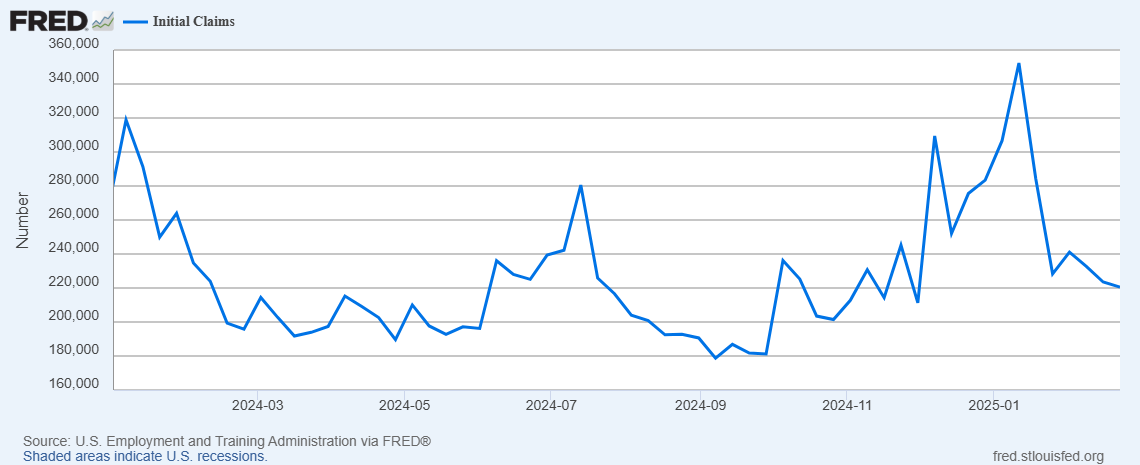Jobless claims
For the week ended 2/22
The latest data on jobless claims in the United States shows a significant increase, raising concerns about the stability of the labor market. Initial jobless claims rose to 242,000 for the week ending February 22, 2025, an increase of 22,000 from the previous week's revised figure. This number is higher than economists' expectations, which predicted around 220,000 to 225,000 claims.
This unexpected rise in jobless claims has caught the attention of economists and policymakers, as it may signal potential vulnerabilities in the job market and broader economic concerns. While one week's data does not necessarily indicate a trend, the coming weeks will be crucial in determining whether this is a temporary fluctuation or a sign of more significant issues in the U.S. labor market.
Jobless claims serve as a key indicator of the health of the labor market and, by extension, the overall economy. Their impact on the economy can be significant.
Economic health indicator: An increase in jobless claims often signals a weakening economy, while a decrease suggests economic improvement.
Consumer spending: Higher jobless claims can lead to reduced disposable income in the economy, potentially lowering personal consumption and gross domestic product (GDP).
Market reactions: Financial markets often respond to jobless claims data, especially if it differs significantly from consensus estimates. Lower claims can lead to market rallies, while higher claims may cause market slumps.
Monetary policy: The Federal Reserve considers jobless claims data when making decisions about interest rates and other monetary policies
Leading economic indicator: Initial jobless claims are one of the components used in the Conference Board's Composite Index of Leading Indicators, which helps forecast future economic conditions
Business sentiment: Jobless claims data can affect business confidence and hiring decisions.
What led to the rise in jobless claims?
The recent increase in jobless claims can be attributed to several factors:
Economic softening: The jump in jobless claims is seen as a sign of potential weakness in the labor market and broader economic concerns.
Economic restructuring: Companies are adjusting to changing market conditions and economic trends, leading to restructuring efforts across various sectors.
Economic uncertainty: The increase comes amid questions over broader economic growth and worrying signs from recent consumer sentiment studies.
Corporate and federal agency job cuts: There has been a notable rise in job-cut announcements from both corporations and federal agencies, contributing to the increase in unemployment benefit applications.Although not yet fully reflected in the data, mass layoffs of probationary federal government workers, particularly those fired by the Department of Government Efficiency (DOGE), may contribute to future increases in claims.



